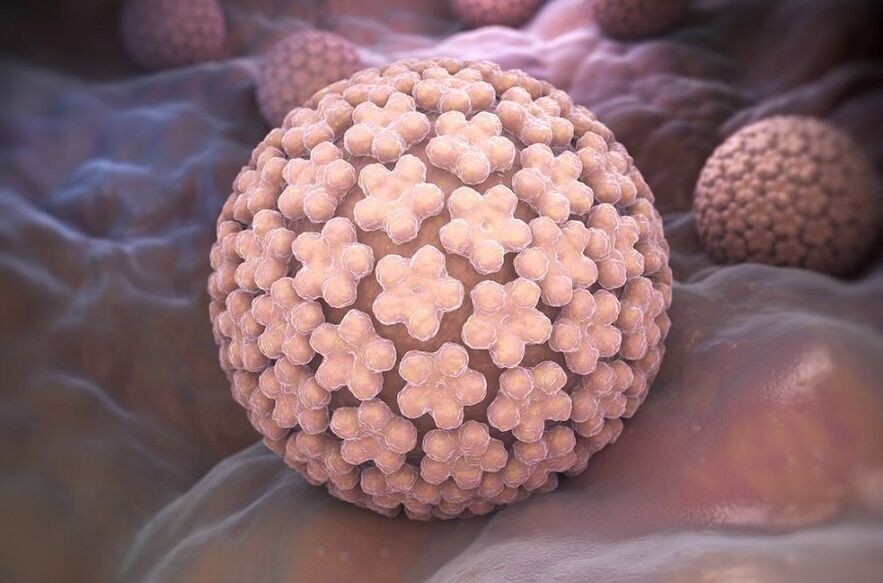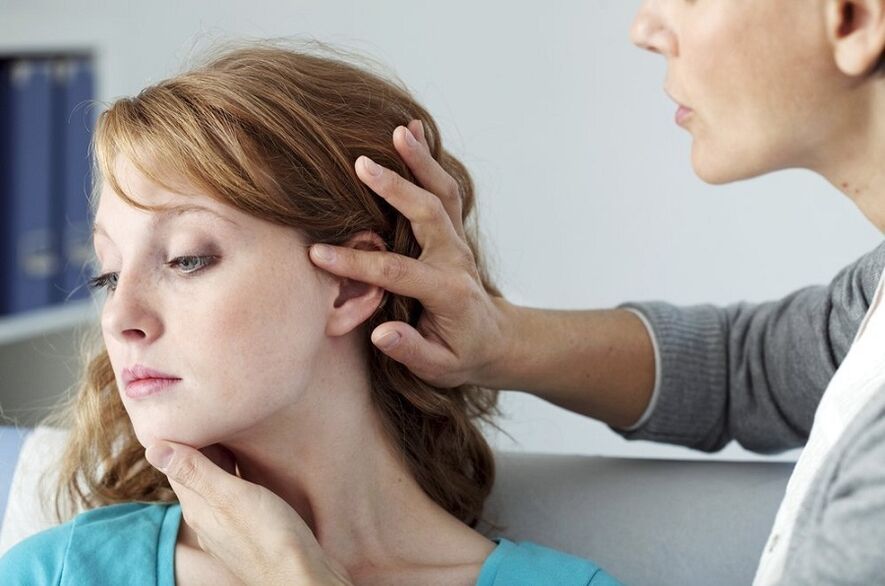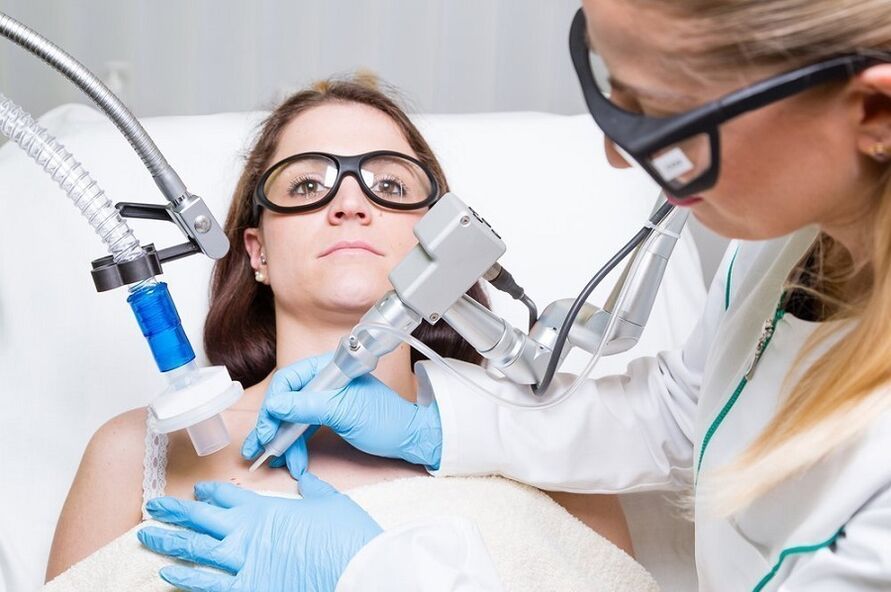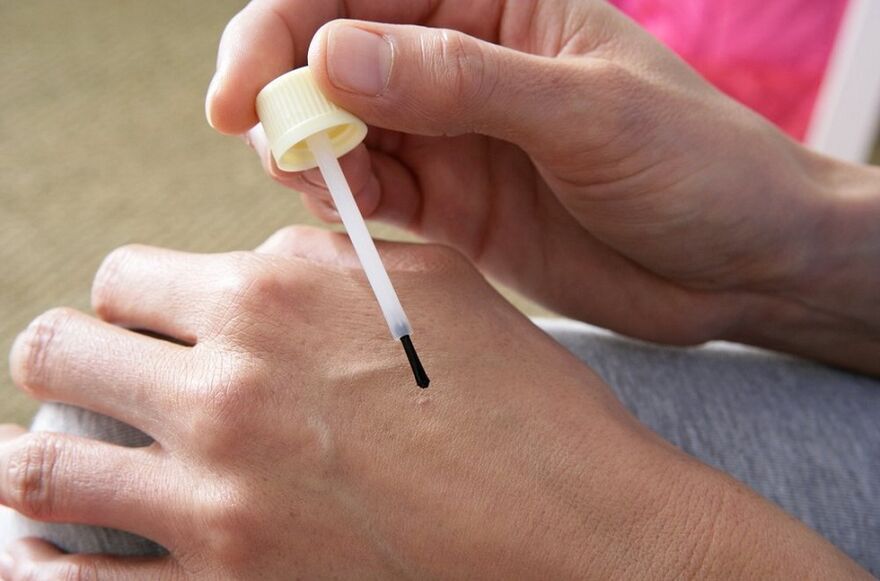Warts are a benign skin neoplasm caused by the proliferation of cells in the epidermis and papillary dermis caused by human papillomavirus, which is transmitted through tissues.
Warts: causes, types, diagnosis and treatment
Warts are a localized, mostly benign formation caused by epidermal hyperplasia. Papillomatous growths and papules are most commonly caused by the activity of viral infections. The main reason for their occurrence is the presence of human papillomavirus (HPV) in the body. HPV infection occurs through contact at home, as a result of which the viral flora penetrates the skin or mucous membranes. Various injuries to the skin and mucous membranes and weak immunity increase the risk of infection.
According to statistics, more than 60% of the population is infected with HPV. At the same time, symptomatic HPV does not manifest itself throughout life. Warts, often called papillomas, appear on the skin and mucous membranes only when there are favorable factors.
There are different types of warts, the appearance of which is caused by one or another virus. All types of skin lesions can be localized either in the skin or in the mucous membrane. It is not always possible to remove the virus from the body.
Warts on the legs, arms and other parts of the body in adults
Men and women are equally susceptible to human papillomavirus infection and therefore to the development of neoplasms such as warts on the skin and mucous membranes. The virus can enter the body through a simple handshake, as well as through the use of general hygiene products and sexual intercourse. After entering the human body, the virus enters the squamous skin epithelium and actively multiplies in its composition. The incubation period for HPV can range from one to one and a half months to six months or more.
In women, warts on the face, genitals and other parts of the body

In women, warts can appear anywhere on the body at any time of life. The shape, color, and size can vary from small flat warts on a white face to dark genital warts on the mucous membranes of the genitals. It should be noted that according to research, genital warts can lead to the development of cervical cancer. In addition, official confirmation has been linked to warts, which are an external manifestation of HPV, and an increased risk of breast cancer.
Papillomas and warts in men
The body of the stronger sex is generally less susceptible to infection and active reproduction of the virus, and especially to the appearance of papillomas and warts. Only a sharp decrease in immunity caused by various diseases can lead to benign lesions on the skin and mucous membranes in men. It should be noted that papillomas and warts on the genitals in men can be localized in the coronary canal and frenum, sometimes at the head or body of the penis, at the entrance to the urethra and directly on its part. mucous membranes in the perianal region.
What are the types of warts in children?

People of all ages are sensitive to the appearance of warts. However, warts are most common in children and adolescents. This can be caused by various papillomatous viruses. Infection of a child's body usually occurs through contact and household contact. Children are more likely to communicate closely with other babies in large groups and to easily "catch" different viruses from each other. In addition, the baby can be infected with the papillomatous virus, which is born during intrauterine development or birth.
Warts: causes of appearance
Many factors can contribute to the formation of warts. Transmission of the papillomatous virus, as mentioned earlier, occurs through close contact with an infected person or his belongings. In addition, a carrier of the virus without external manifestations can play a role as a source of infection. Also, autoinoculation or, in other words, self-infection is not excluded. Thus, warts on the face and neck can appear after shaving and cosmetic peeling. The same applies to papillomas and warts on the legs, chin and underarms. Various skin lesions only increase the risk of HPV infection. This often happens in swimming pools, gyms and saunas.
Motivational factors

The virus that causes warts is unlikely to penetrate the body of a healthy person with strong immunity. The risk of infection can be increased by:
- Damage to the skin and mucous membranes.
If present, contact with an infected person or an object with a virus on its surface can result in infection. HPV can stay in the environment for about 2-3 hours. During this time, someone is very likely to become infected. Injuries (wounds, cuts, crumbs), sweating and therefore constantly moisturizes the skin.
- High humidity and heat.
Such a stimulus is the most important for the formation of warts on the legs. Uncomfortable park shoes, which cause excessive sweating of the feet, calluses and skin damage, can cause epithelial growths such as warts on the feet.
- Weakening of the immune system.
Although there is a virus in the body, the appearance of warts is far from always observed. A person has been carrying the virus for decades and is unaware of it. With strong immunity, the body constantly suppresses the virus and prevents it from multiplying. As soon as the immunity is weakened, the virus is activated immediately, which is accompanied by the appearance of external manifestations.
Seborrheic warts
With age, the human body undergoes significant changes, not only in appearance but also in health. Thus, disruption of the distribution of basal cells of the epidermis leads to the formation of benign formations called seborrheic warts. In other words, such warts are called old. Age warts are very simple to identify by their characteristic appearance:
- are represented by papules or plaques on the surface of the skin.
- neoplasms are round or oval;
- they are usually localized on the skin of closed areas of the body, as well as on the face and scalp;
- warts can be yellow-brown and sometimes even black;
- The size of the formations can vary from 0, 5 to 4 cm.
The boundaries of seborrheic warts are clear. They protrude slightly above the skin and can be slightly straightened.
If you get these warts on your hands, face, body or head, you should consult a doctor. To determine the most effective, safe tactics for their treatment and removal, it is necessary to conduct a differential diagnosis that distinguishes seborrheic warts:
- Pigmented nevi.
These neoplasms are benign. Like seborrheic warts, pigmented nevi are closer to yellow-brown or dark, black. Sometimes the papillomatous surface of nevi is covered with hairs. Their size may vary. In form, these types of neoplasms can be represented by giant plaques or flat papules with a smooth surface.
- Dermatofibromas.
Such a good formation is formed from the skin and connective tissues. In appearance, dermatofibromas have a certain resemblance to moles and warts. The surface of the molds can be both smooth and keratinized. Their shape is round. Dermatofibroma is located partly in the upper layers of the skin and partly extends above the surface. Single neoplasms are often found. The color can be different: from gray-pink to purple. Sometimes dermatofibromas are brown or black. The size of the formations is about 1 cm.
- Melanomas.
Unlike dermatofibroma and pigmented nevus, melanomas are malignant tumors. They appear at the site of moles or in nearby tissue areas. Factors that provoke malignancy of skin cells are ultraviolet rays, various damages.
Human papillomavirus infection

As mentioned earlier, HPV is the cause of HPV infection. To date, more than a hundred species are known to affect the body in one way or another. Each type of virus causes certain warts:
- HPV 1 - benign formations on the palms and soles;
- HPV 2 - ordinary (vulgar);
- HPV 3, 10, 28 and 29 - flat neoplasms;
- HPV 4 - warts and vulgar warts on the soles of the feet;
- HPV 6, 11 - laryngeal papillomatosis and genital warts;
- HPV 5, 8, 9, 12, 14, 15, 17, 19-25, 36, 39, 40 - generalized manifestation of the virus with malignant epidermodysplasia;
- HPV 7 - vulgar warts;
- HPV 13, 32 - focal spread of epithelial tissues;
- HPV 16, 18, 31, 33, 35 - malignant neoplasms such as carcinomas and genital dysplasia.
In addition, with the weakening of the immune system, the human body becomes more susceptible to type 26 and type 27 papillomatous viruses. In some cases, HPV 30, 34, 37 and 38 can cause benign and malignant tumors.
It should be noted that some types of papillomatous viruses are transmitted through domestic contact, while others are transmitted sexually.
Types of warts: ordinary, herbal and others, treatment
Many types of papillomatous viruses and other causes of warts cause different localization and different characteristics of the formations. So here it is:
- Common warts are also called vulgar warts.
They are most often localized on the skin of the hands. The color of these growths can range from flesh to brown.
- Plantar warts.
Such formations grow deep into the tissues, cause painful sensations, and are accompanied by thrombosis of bleeding capillaries with even the slightest damage. Plantar warts should be treated by a doctor and should not be cut by themselves or in a nail salon.
- Straight warts.
Their localization is usually observed in the neck, face, chest, knees and forearms.
- Anogenital warts are more commonly known as genital warts.
Such formations affect the skin and mucous membranes of the external genitalia, as well as the perianal region. Localization is possible with subsequent proximal proliferation at the entrance to the urethra.
- Perianal warts.
Such formations are most often located in the anus and vagina, as well as in nearby tissues of the external genitalia in women. In men, perianal warts are localized in the anus.
- Laryngeal papillomatosis.
This manifestation of the virus occurs mainly in childhood. There can be a lot of masses, which is a special threat to life and causes obstruction of the respiratory tract.
Anogenital warts
Anogenital warts are benign neoplasms localized in the skin and mucous membranes of the external genitalia, as well as in the perianal region. All anogenital warts are generally divided into:
- Typical condylomata.
Such warts are usually localized at the entrance to the vagina, anus, as well as in the inner layer of the foreskin. In shape, such neoplasms resemble cauliflower.
- Papular warts.
The surface of such neoplasms is smooth and does not contain keratinized layers.
- Hyperkeratotic warts.
Unlike previous warts, the surface of such anogenital formations is covered with keratinized tissue particles. Hyperkeratotic warts are most often localized on the outer leaf of the foreskin, the trunk and scrotum of the penis in men, as well as on the labia majora in women.
- Straight warts.
The formations are represented by spots protruding slightly above the surface of the skin. They are practically invisible and are not always immediately assigned by one person.
Giant condylomata Buschke - Levenshtein

Carninoma-like genital warts occur when the HPV 16 virus enters the body. According to some studies, HPV viruses type 1, 6, 11, 18, 31, 33 can be caused by both contact and sexually transmitted diseases. the appearance of such warts. The second name of such an education is the giant condyloma Bushke-Levenshtein. The main differences:
- rapid progressive growth in size;
- opportunity for re-education after treatment;
- destruction of nearby tissues;
- High probability of malignancy with subsequent development of squamous cell skin cancer.
Young and old people are most susceptible to this type of neoplasm. In men, the virus manifests itself in the formation of genital warts in the tissues of the penis and foreskin. Sometimes Buschke-Levenshtein condyloma can be placed on the body of the penis. Formations in the female body are usually located in the perianal, anorectal and groin areas. Appearance on the face, oral mucosa, as well as other areas of the skin and mucous membranes is not excluded.
Common warts on the fingers and other parts of the body
The most common benign skin lesions are vulgar warts, also called common warts. In appearance, such formations are hard and dry peaks on the skin. Their surface is uneven. Dimensions vary from a few millimeters. Often, these warts are localized on the fingers and hands, as well as on the face. The color of neoplasms is usually grayish, yellow-brown or fleshy.
Palmar-plantar warts on the hands and feet
Warts can be easily seen on both the palms and soles of the feet. They come in a variety of shapes and colors, from light yellow to dark brown. These epithelial formations are common in the population. It can be superficial and mosaic-like in appearance or deep (hyperkeratotic).
Treatment of palmar and plantar warts is complicated. A dermatologist should rule out lichen planus and wart tuberculosis during a thorough diagnosis.
Straight warts on the face

A flat wart is almost always small and has a smooth (rarely scaly) surface. The color is almost indistinguishable from the color of the skin, so people often live with such formations and do not even notice them. Typically, such epithelial smooth formations appear on the skin in all groups.
At the first appointment, the specialist will be able to detect and accurately identify straight warts on the face or, for example, on the back of the hands. A visual examination is enough for a competent doctor to understand what he is doing. If the dermatologist doubts the probable diagnosis, additional diagnostics, including laboratory tests, may be prescribed.
Diagnosis of human papillomavirus infection
The clinical manifestations of a wart depend primarily on where it occurs. Each individual epithelial tumor described above has its own individual characteristics.
- A common wart is characterized by an obvious hyperkeratosis (high rate of stratum corneum and desquamation cells).
Looks like papules in the form of knots or domes. Such warts appear mainly on the skin of the hands, feet and elbows, where there is an increased risk of tissue damage.
- Flat warts have a flattened apex, are small in size and no more than 3-4 mm in diameter.
If a wart appears in the area of skin wrinkles, then the initial diagnosis can be difficult, as such papules or growths may present as straight or normal warts.
- Warts on the soles of the feet can be accompanied by a symptom of pain, because these areas of the body are constantly traumatized. The center of such an epithelial tumor may be slightly compressed.
It is not uncommon for several warts on the sole to combine into a single structure, forming a mosaic pattern.
- When it comes to filamentous warts, such a problem can appear on the skin of the face.
They grow rapidly, so when they are detected, they try to eliminate them as a cosmetic defect.
- Also, warts can be diagnosed in the oral cavity, where the formations are most often represented by small whitish or pink nodules.
Such a problem is extremely rare, usually found at a dentist's appointment or during a routine examination of the body.
Warts: treatment

Epithelial tumors in the form of warts are treated only under the strict supervision of the attending physician. Therapy cannot be general, because each individual event of appearance and development of the disease is individual. For this reason, it is not recommended to use suspicious drugs in a pharmacy on the advice of friends, advertisers or a pharmacist.
To date, there is no specific therapy for human papillomavirus. That is why the treatment of warts is aimed at eliminating the symptoms of viral lesions.
If a patient is diagnosed with condyloma, this type of education definitely needs a well-chosen therapy because there is a risk of malignant degeneration.
There are several ways to treat warts, each with its own characteristics. The effectiveness of all therapeutic methods is about 70%.
Remedy for warts: external therapy
Treatment of warts is primarily aimed at eliminating them. It can be done with physical intervention or medication.
Warts are treated in a complex way by external methods. The doctor may prescribe medication and keratolytic drugs. It can be 10% silver nitrate solution, 50% lactic acid solution.
Your doctor may prescribe antiviral medications for warts.
Cytotoxic drugs such as fluorouracil cream are also relevant. It is prescribed for the treatment of warts and all kinds of plasters with salicylic acid (40%).
Physical destruction of warts can be done by liquid nitrogen and electrocoagulation. Chemical destruction of tissues can be used salicylic or trichloroacetic acid, sodium silver solution, sodium hydroxide.
Immunotherapy is also used. After the wart is removed, your doctor may prescribe anti-inflammatory medication.
It is forbidden to remove warts at home

Traditional medicine, for the most part, can safely treat many diseases. However, this idea is wrong, because mixtures of essential oils and herbs, infusions and all kinds of compresses can only play a supporting role and should never be used as the main type of therapy.
Along with the medicinal effects, the participating specialist can write recipes for alternative medicine with locusts, rye fruits, wormwood, onions, flaxseed oil, milk thistle.
Warts are not removed at home. Education cannot be cut with sharp objects, pierced and cut. Only a qualified physician can prescribe adequate and safe therapy after determining the patient's condition. Be careful and do not give yourself medication.
Laser wart removal and other methods
Modern medicine uses several surgical methods to remove warts.
- Electrocoagulation is one of the most proven methods for cleaning various warts.
The manipulation is performed under local anesthesia using a coagulator. The high-frequency current applied to the steel bend helps to gently cut the epithelial mass and prevent bleeding during and after surgery.
- Surgical excision is indicated for extensive skin lesions.
The manipulation is performed under local anesthesia, followed by the removal of cosmetic sutures after about 1 week. A small wound may remain.
- Laser removal of warts is the newest treatment.
The effect of such manipulation can be presented in the form of evaporation or clotting of skin cells. Laser removal of warts is fast and completely painless, because the procedure is performed under local anesthesia. There may be a small depression that will disappear 12-20 days after the wart is removed.
Laser removal is currently offered in many medical centers and clinics.
- Warts are also cleaned using low temperatures.
Deep freezing of tissues causes their death. Liquid nitrogen cryodestriction is performed in this way.
This type of wart removal is performed using a cryo-applicator with a cotton swab or an application stick. In any case, the procedure is effective and takes only a few minutes.
The applicator is applied to the wart (vertically) and slightly pressed on it. The time for freezing of an epithelial tumor depends primarily on its size. Ice cream usually takes 7 to 35 seconds.
It is important to know that removing warts in any way does not guarantee that the problem will not recur. The likelihood of recurrence depends on a number of factors, including the patient's immune system. According to statistics, recurrence of the disease occurs in more than 20% of patients after 3-4 months. For this reason, many doctors prescribe general anti-relapse therapy along with surgical removal of warts.
Prevention of warts

To protect yourself at least a little from a viral infection and reduce the risk of warts in your body, doctors recommend that you lead a healthy lifestyle in the first place. It is necessary to constantly protect the immune system, which loses its protective functions due to constant nervous tension, lack of sleep, nutrition and even vitamin deficiency.
Doctors recommend:
- Avoid casual sex. It is advisable to have a permanent and healthy partner.
- Follow the rules of personal hygiene. You should not use someone else's towel, go to the public bathroom without changing your shoes.
- Treat skin lesions properly.
It is also important to eat properly, lead an active lifestyle, get rid of bad habits, get enough sleep, be less nervous, because all these factors have a negative impact on the immune system.























